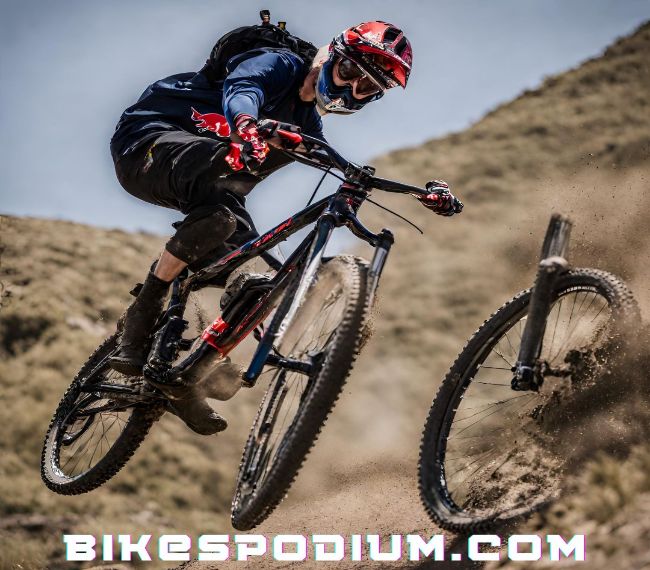Mountain biking is an exhilarating sport that requires the right equipment to ensure a safe and enjoyable ride.
One of the often-overlooked components of a mountain bike is the grips. Choosing the right size MTB grips is crucial for comfort, control, and overall riding experience.
In this article, we will explore everything you need to know about MTB grips, including the importance of grip size, different types of grips, and how to select the perfect size for your bike.


The Importance of Grip Size
MTB grips may seem like a minor part of your bike, but they play a significant role in your riding experience. The right grip size can enhance your control over the bike and reduce hand fatigue, while the wrong size can lead to discomfort, numbness, and even compromised control.
Having a grip that is too large can cause your hands to overextend, leading to muscle fatigue and reduced control. On the other hand, a grip that is too small may result in a cramped and uncomfortable grip, causing hand pain and reducing your ability to maneuver the bike effectively.
To ensure a comfortable and controlled ride, it’s crucial to choose the right grip size. Consider your hand size, riding style, and personal preferences when selecting grip size. Measuring the circumference of your hand at its widest point, usually around the knuckles, will give you an idea of the grip size you need. Grip sizes typically range from small to large, with some manufacturers offering extra-small and extra-large options. It’s important to try different grip sizes and determine what feels most comfortable for you.
Also Read:
boyne highlands downhill mountain biking
bryce mountain bike park virginia mtb
Types of MTB Grips
Before we delve into the sizing aspect, let’s explore the different types of MTB grips available in the market:
- Lock-on Grips: These grips feature an outer collar that attaches to the handlebars with screws, ensuring a secure and slip-free fit. They are easy to install and remove, providing the flexibility to experiment with different grip sizes. Lock-on grips are a popular choice among riders who value convenience and versatility.
- Slip-on Grips: These grips do not have an outer collar and are usually made of a stretchable material like rubber or silicone. Slip-on grips offer a lightweight and minimalistic design but may require adhesive or wire ties to secure them to the handlebars. They provide a snug fit and are known for their simplicity and ease of installation.
- Ergonomic Grips: Designed to reduce hand fatigue and provide ergonomic support, these grips feature a contoured shape that conforms to the natural shape of your hands. Ergonomic grips are a popular choice for riders who spend long hours on the trails. They offer superior comfort and help alleviate pressure points, allowing for a more enjoyable riding experience.
- Foam Grips: Foam grips offer excellent shock absorption and are lightweight. They are often used by riders who prioritize comfort and vibration damping. Foam grips provide a soft and cushioned feel, reducing the strain on your hands during longer rides. They are also known for their durability and resistance to wear and tear.
- Gel Grips: Gel grips provide superior cushioning and are ideal for riders who prefer a plush and comfortable feel. These grips are made with a gel-like material that molds to your hands, offering excellent shock absorption. However, they may not offer as much durability as other grip materials and may require more frequent replacement.
Each type of grip has its own advantages and disadvantages, so it’s important to consider your riding style and preferences when choosing the right grip for your bike. Take into account factors such as comfort, grip texture, and shock absorption to make an informed decision.
Choosing the Right Grip Size
Now that we understand the importance of grip size and the different types available, let’s dive into how to choose the right size MTB grips for your bike:
- Hand Size: The first factor to consider is your hand size. Measure the circumference of your hand at its widest point, usually around the knuckles. Grip sizes typically range from small to large, with some manufacturers offering extra-small and extra-large options. Keep in mind that hand size can vary, so it’s important to try different grip sizes and determine what feels most comfortable for you.
- Riding Style: Your riding style also plays a role in grip selection. If you engage in aggressive downhill riding, you may prefer a thicker grip for better control and shock absorption. Thicker grips provide a larger contact area, allowing you to maintain a firm grip on the handlebars even during rough descents. For cross-country or trail riding, a thinner grip may provide a lighter and more responsive feel, allowing for quick and precise maneuvers.
- Personal Preference: Ultimately, personal preference should guide your decision. Some riders prefer a larger grip for enhanced control, while others prefer a smaller grip for a more direct connection to the bike. It’s essential to try different grip sizes and determine what feels most comfortable for you. Experimenting with different grip sizes can help you find the perfect fit and optimize your riding experience.
- Testing and Experimentation: Many bike shops offer the opportunity to test different grip sizes before making a purchase. Take advantage of this option to get a feel for different grip diameters and materials. Additionally, don’t hesitate to experiment with different grips and sizes to find the perfect fit for your hands and riding style. Consider factors such as grip texture, material, and shape to find the optimal combination for your needs.
Maintenance and Replacement
Once you’ve selected and installed your MTB grips, it’s important to maintain them for optimal performance and longevity. Here are a few maintenance tips:
- Clean Regularly: Dirt, sweat, and grime can accumulate on your grips over time. Clean them regularly with mild soap and water to remove any residue that may affect grip performance. Avoid using harsh chemicals or abrasive materials that could damage the grip material.
- Inspect for Wear: Keep an eye out for signs of wear, such as cracks, tears, or loss of grip texture. Replace your grips as soon as you notice significant wear to maintain control and prevent accidents. Regularly inspecting your grips will help you identify any issues early on and ensure your safety on the trails.
- Rotate Grips: To extend the life of your grips, consider rotating them periodically. This practice distributes the wear evenly across the grip surface, preventing premature deterioration. By rotating your grips, you can maximize their lifespan and maintain consistent performance.
- Replace When Necessary: Grips have a limited lifespan, especially if you ride frequently. As a general rule, it’s recommended to replace your grips at least once a year or more often if you notice a decline in performance or comfort. Pay attention to any signs of wear or discomfort and replace your grips as needed to ensure a safe and enjoyable mountain biking experience.
In conclusion, selecting the right size MTB grips is essential for a comfortable and controlled ride. Consider your hand size, riding style, and personal preferences when choosing grip size. Take advantage of testing opportunities and don’t be afraid to experiment to find the perfect fit. Remember to maintain and replace your grips as needed to ensure a safe and enjoyable mountain biking experience. Always prioritize your safety and consult with professionals or trusted sources for specific recommendations and advice.
FAQ
1. Why is grip size important for mountain biking?
Choosing the right grip size is important for comfort, control, and overall riding experience. The right grip size enhances control and reduces hand fatigue, while the wrong size can lead to discomfort, numbness, and compromised control.
2. What are the different types of MTB grips?
There are several types of MTB grips available in the market, including lock-on grips, slip-on grips, ergonomic grips, foam grips, and gel grips. Each type has its own advantages and disadvantages, so it’s important to consider your riding style and preferences when choosing the right grip for your bike.
3. How do I choose the right grip size for my bike?
To choose the right grip size, consider your hand size, riding style, and personal preferences. Measure the circumference of your hand at its widest point, try different grip sizes, and determine what feels most comfortable for you. It’s also important to consider factors such as comfort, grip texture, and shock absorption.
4. How do I maintain and replace my MTB grips?
To maintain your MTB grips, clean them regularly with mild soap and water, inspect them for wear, rotate them periodically to distribute wear evenly, and replace them when necessary. Grips have a limited lifespan, so it’s recommended to replace them at least once a year or more often if you notice a decline in performance or comfort.



